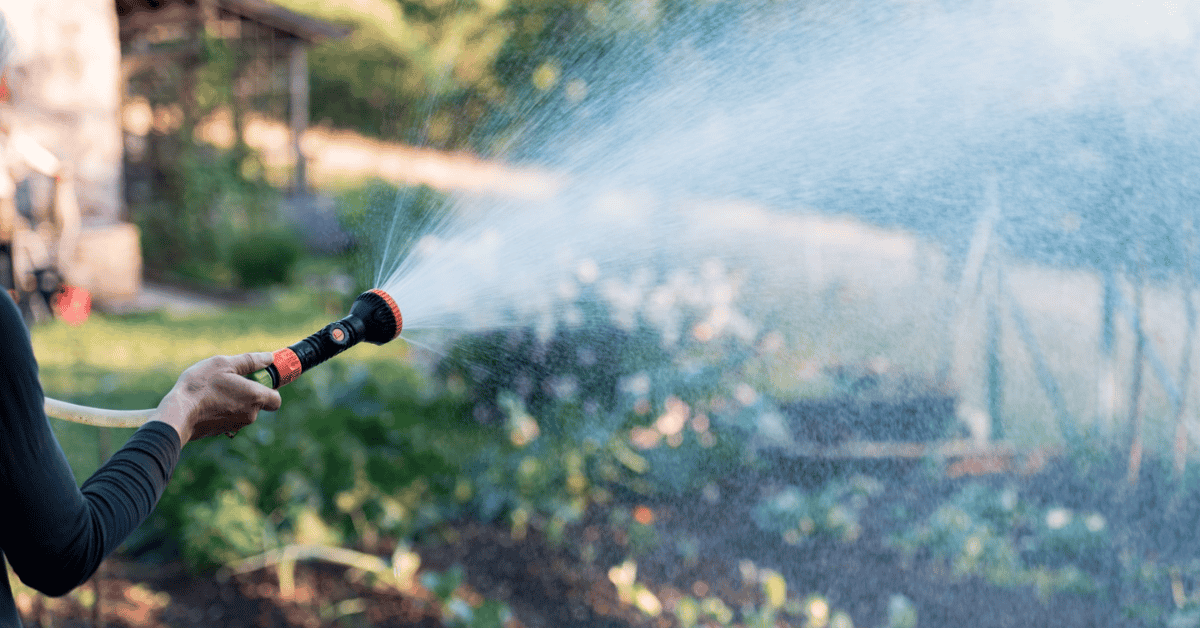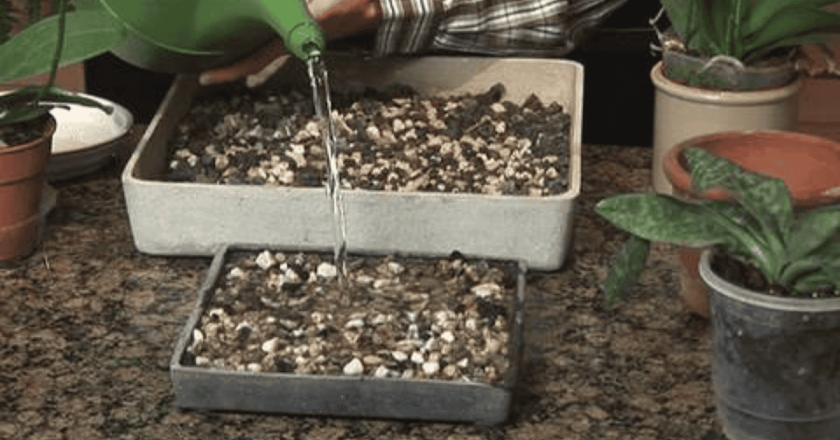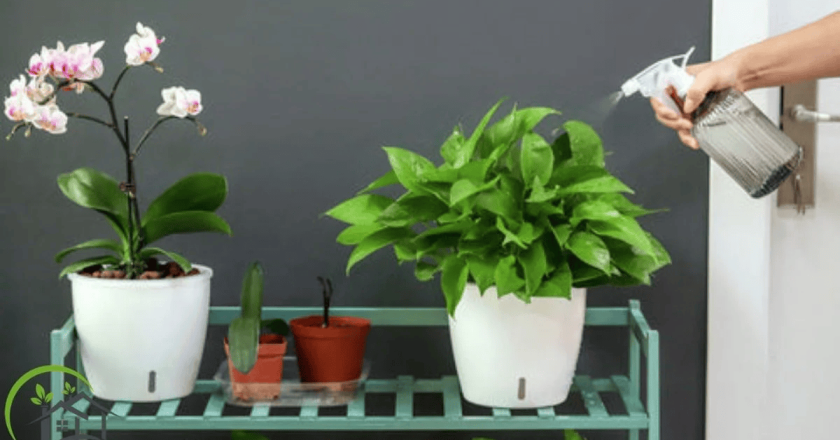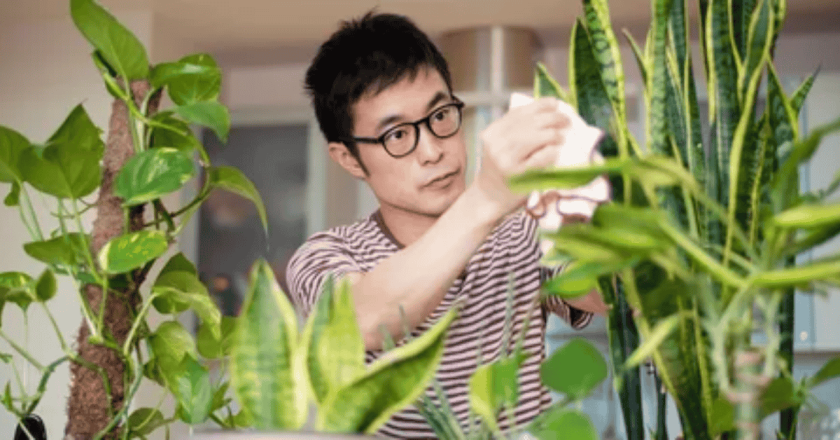You know how people often say “plants just need water and light”? It sounds simple enough. But the truth is, most plant owners—beginners and even people who’ve kept houseplants for years—struggle with water. Too much of it, too little of it, and everything in between. And the most common issue of all? Overwatering.
It’s tricky because water feels like a way of showing care. You see droopy leaves, you reach for the watering can. You’re home on a hot day, you give your plants a little drink “just in case.” But ironically, that kindness is often what hurts them the most.
This article explores the signs of overwatering, what happens when roots are drowning rather than absorbing water, and provides practical steps for watering plants effectively. Along the way, I’ll share some easy plant watering tips, mistakes to avoid, and a bit of the science behind proper plant hydration.
And if you’re curious to go deeper into plant-specific advice, guides like Peace Lily Care or Snake Plant Care can give you a sense of just how different species’ needs can be.
Why Overwatering Happens So Often
If I’m being honest, Overwatering usually doesn’t come from laziness—it comes from too much love. We assume water equals life. And yes, plants need it. But they also need oxygen in the soil. When the soil stays soggy, oxygen levels drop. Roots suffocate, and instead of absorbing nutrients, they start to rot.
This is what people mean when they talk about root rot from overwatering—a condition that, once it sets in, can kill even the hardiest plant faster than you might expect.
Another reason it’s so common? Most of us are on irregular routines. We don’t always follow a proper watering schedule. Sometimes we water twice, and sometimes we forget. To “make up for it,” we pour more than needed. And, of course, some plants are just pickier. A cactus in the same home as a fern is bound to cause confusion.
The Most Common Signs of Overwatering
It’s not always obvious. Many overwatering symptoms look similar to underwatering. Leaves droop in both cases, which is why so many of us misdiagnose and end up giving more water—making the problem worse. But here are some clear giveaways that you’re dealing with too much water in plants rather than too little:
-
Yellowing leaves – not crisp and dry but soft and mushy at the edges.
-
Wilting despite wet soil – leaves sag even when the pot feels heavy with moisture.
-
Brown leaf tips – especially common in indoor plants where evaporation is slower.
-
Foul smell from soil – a sign that fungi and bacteria are thriving in waterlogged roots.
-
Mold or fungus gnats – damp soil attracts pests and encourages mold growth.
-
Stunted growth – your plant doesn’t die outright but it just doesn’t seem to move forward.
If you’ve noticed any of these, it’s worth asking: is this Overwatering? Or is there another issue like poor soil drainage? That’s part of what makes this tricky—plant care mistakes often overlap.
How to Water Plants the Right Way
There isn’t a single answer because each plant species has different needs. But some universal best watering practices can help almost every situation.
-
Check before you water. Stick your finger about two inches into the soil. If it’s still moist, wait. Dryness at the surface doesn’t mean the whole pot is dry.
-
Adjust to the season. In winter, growth slows and plants need less. Summer may require more frequent checks.
-
Drainage matters. Always use pots with drainage holes. Pairing with well-draining soil helps reduce common plant problems associated with soggy roots.
-
Deep, less frequent watering. Water thoroughly so moisture reaches the roots, but let the soil dry before the next round.
-
Tailor by plant. A Christmas Cactus doesn’t want the same routine as a Money Tree. Learning the quirks of each plant is part of the fun.
It might help to think of water like food. Some people thrive on three square meals a day, while others prefer snacks throughout the day. Plants are the same.
Underwatering vs Overwatering: Spot the Difference
A lot of frustration comes from mixing these two up. Here’s a quick comparison:
-
Underwatering: Leaves are dry, crispy, and sometimes curled. Soil pulls away from the pot edges.
-
Overwatering: Leaves are yellow and limp, soil is wet or smells odd.
If you’re ever torn between the two, always err on the side of underwatering. Most plants recover from dryness. Few recover from drowning.
Watering Mistakes to Avoid
Even with the best intentions, we all make missteps. Here are some of the most common watering mistakes I’ve seen:
-
Using decorative pots with no drainage.
-
Following a rigid schedule without checking the soil first.
-
Mistaking “thirst” for “stress” (plants wilt for many reasons).
-
Watering small indoor plants as often as big outdoor ones.
-
Ignoring seasonal changes in light and humidity.
One thing that helped me was keeping a small notebook of watering dates for fussier plants. It sounds excessive, but it reduced the guesswork.
Indoor Plant Watering Guide
Indoor plants tend to suffer more from Overwatering because evaporation indoors is slower. Here are some indoor plant watering guide basics:
-
Use lighter soil mixes for houseplants.
-
Group plants with similar needs.
-
Pair with solutions like humidity trays or low-maintenance plants.
-
Be careful with automatic systems indoors; they can oversaturate if not calibrated.
If you’re growing in bathrooms or kitchens, moisture levels might already be higher. Guides like Best Plants for Your Bathroom show how placement matters as much as watering.
Garden Watering Tips
Outdoor plants face different challenges. Heat, wind, and soil quality all shift how much water they need. Some garden watering tips worth keeping in mind:
-
Water in the morning or evening, not midday.
-
Mulch to reduce evaporation.
-
Focus on the base, not the leaves, to reduce fungal problems.
-
Utilise sustainable methods, such as drip irrigation, to reduce waste.
For anyone designing patios or larger green spaces, check out low-maintenance outdoor plants. Choosing the right species often matters more than perfecting a routine.
Correct Watering Methods: A Practical Routine
Instead of obsessing over exact volumes, focus on habits:
-
Observe plants daily, but water only when needed.
-
Keep notes on plant health issues over time.
-
Treat watering as feedback—you learn from how your plant reacts.
This mindset shift—less about strict rules, more about noticing—can save you from many plant care mistakes.
Sustainable Hydration Practices
Plant care is also about balance with the environment. Overwatering wastes water, encourages pests, and often leads to the premature replacement of plants. Thinking about sustainable plant care means:
-
Reusing rainwater where possible.
-
Choosing pots designed for better drainage.
-
Growing plants suited to your climate to reduce struggle.
It’s not about perfection. It’s about small steps that make a difference.
🌿 Key Takeaways
-
Overwatering is one of the most common plant care mistakes and often causes root rot if ignored.
-
Yellow, drooping leaves with soggy soil are the clearest signs of overwatering, while dry, crispy leaves usually mean underwatering.
-
Always check soil moisture before watering—avoid following a rigid schedule that doesn’t match plant needs.
-
Using drainage-friendly pots and well-draining soil helps prevent too much water in plants.
-
Different plants need different watering methods, so learning species-specific habits is key to healthy growth.
🌱 Final Thought
Caring for plants isn’t about perfection—it’s about observation. Overwatering occurs when we confuse care with excess, but plants reveal their needs if we’re patient enough to notice. Once you start paying attention to soil, leaves, and even smell, watering becomes less of a guessing game and more of a rhythm. Think of it as learning your plant’s language—each one speaks differently, and the right response makes all the difference.
❓FAQs
Q1. How can I quickly check if I’m overwatering my plant?
Stick your finger two inches into the soil. If it’s still wet and the leaves look droopy or yellow, it’s likely Overwatering.
Q2. Can plants recover from overwatering?
Yes—if caught early. Remove excess water, trim damaged roots if needed, and repot in fresh soil with better drainage.
Q3. What are the most common overwatering symptoms?
Yellow leaves, soft stems, musty-smelling soil, fungus gnats, and stunted growth are all classic symptoms of overwatering.
Q4. How often should I water my houseplants?
It depends on species, season, and environment. Instead of sticking to a strict schedule, focus on soil checks and plant signals.
Q5. Is it better to underwater than overwater?
Generally, yes. Most plants bounce back from dryness, but root rot from overwatering can be fatal if left untreated.




